We love our dogs, but most of us do not have the luxury of spending 24 hours a day with our canine companions.
Dogs with separation anxiety will become overly anxious and afraid when separated from the person they love.
If your dog needs to be comfortable spending multiple hours alone each day, it is better to choose an independent dog breed and avoid breeds that struggle with separation anxiety.
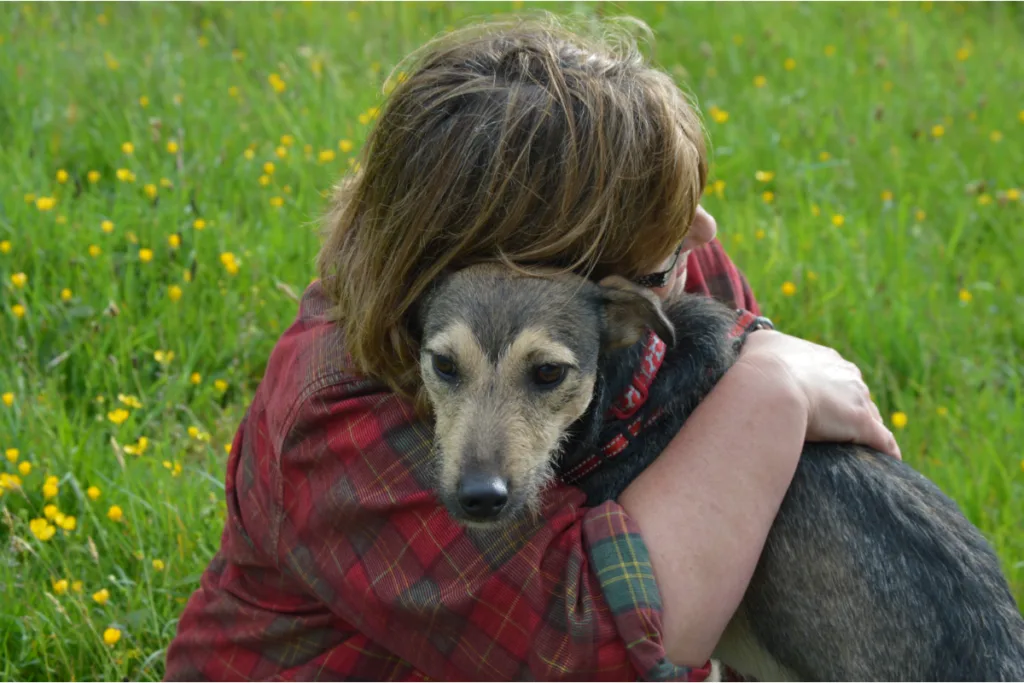
The following ten dog breeds have the worst separation anxiety:
- Mixed Breed Dogs
- English Cocker Spaniels
- Gordon Setters
- Schnauzers
- Miniature Dachshunds
- Jack Russell Terriers
- German Shepherds
- Tibetan Spaniels
- Toy and Miniature Poodles
- Irish Soft-Coated Wheaten Terriers
In the USA, approximately 20% of dogs have separation anxiety, with some dog breeds having a higher incidence of separation anxiety than others.
Learning which dog breeds are prone to separation anxiety will help you choose a dog who suits your lifestyle.
Click Here to Jump to a Section
1. Mixed Breed
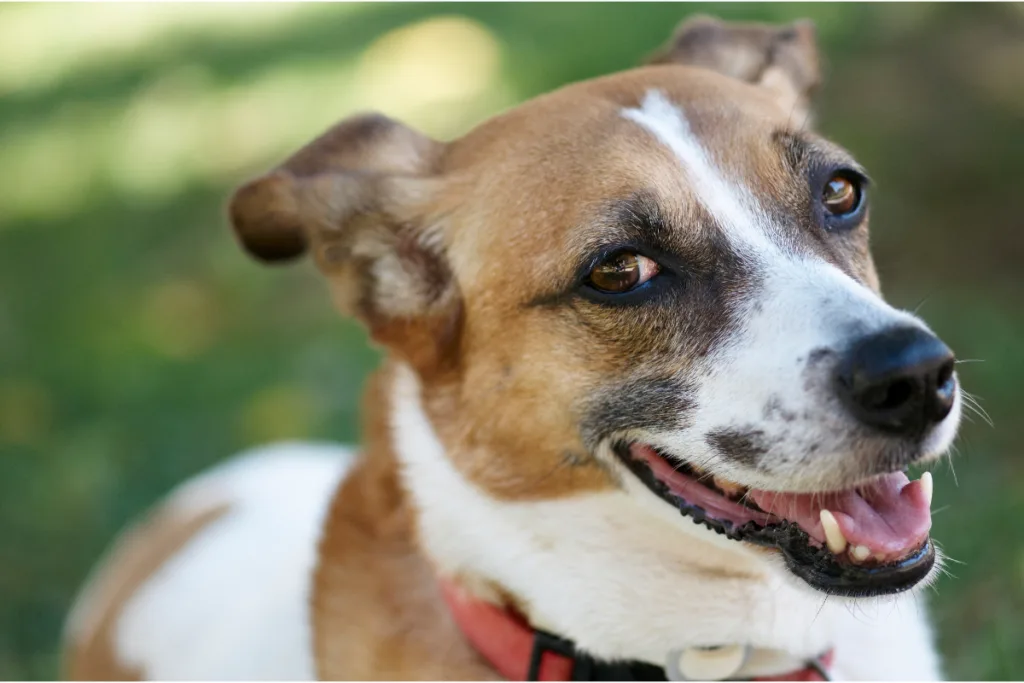
Mixed breed dogs have developed a reputation for being tough, low-maintenance dogs.
There is an unspoken but widely accepted opinion: if you don’t want to pay a fortune for a dog and can’t see yourself catering to the whims of an overbred purebred, then the best dog is a no-fuss, hardy crossbreed.
Mixed breed dogs tend to be healthier than their purebred counterparts due to the benefits of hybrid vigor and reduced risk of hereditary illnesses.
However, there is more to a crossbreed’s temperament needs than meets the eye!
Three independent studies spanning two decades found that mixed-breed dogs have the highest incidence of separation anxiety.
The first two studies conducted in 2001 and 2014 discovered that mixed breed dogs were more likely to display separation anxiety and aggression towards strangers.
The third study, published in 2020, performed a large-scale review of 13,600 dogs living in Finland.
The researchers found that mixed breeds dogs were more likely to suffer from separation anxiety, inattention, hyperactivity, and aggression.
2. English Cocker Spaniel
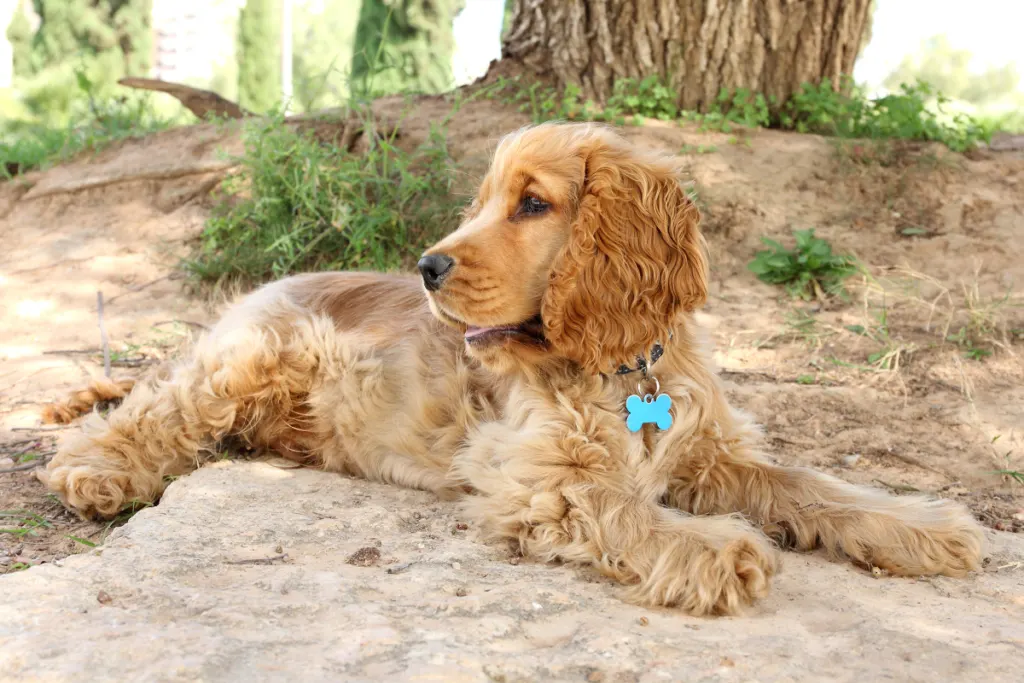
In the animated movie “Lady and the Tramp,” Lady epitomized the ideal English Cocker Spaniel. Lady is a sweet little dog with a friendly, outgoing temperament and an innate sense of politeness.
The American Kennel Club (AKC) describes English Cocker Spaniels as merry dogs; who are willing to work tirelessly in the field while retaining their friendly, good humor and mellow attitude towards life.
This description of the ideal English Cocker Spaniel hardly seems congruent with a breed prone to separation anxiety!
Sadly, the blame for the breed’s high incidence of separation anxiety is (in part) due to improper breeding practices that allowed undesirable temperament traits to be introduced to the English Cocker Spaniel population.
The overbreeding of English Cocker Spaniels as show dogs and for the pet market has resulted in problematic traits being passed down through family lines.
The widespread prevalence of aggression and anxiety-related behaviors found in English Cocker Spaniels has earned them a reputation for being difficult, unpredictable, and generally unpleasant dogs to have in the home.
3. Gordon Setter
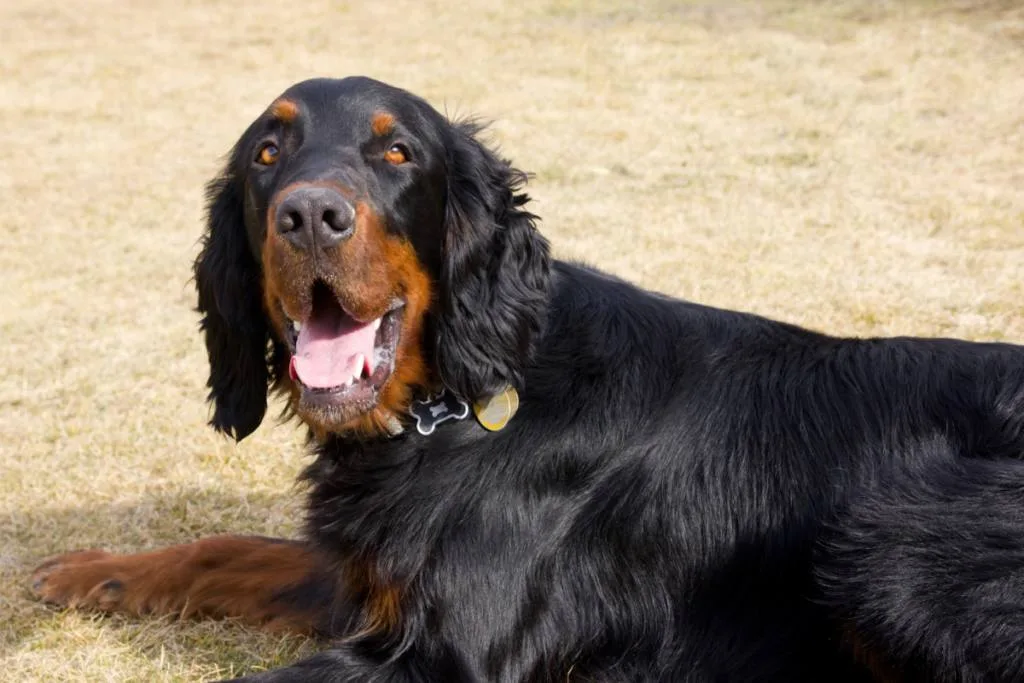
Gordon Setters are known to be energetic, intelligent, loyal, and devoted to “their” people, characteristics that, on paper, sound like a storybook dog.
Unfortunately, there is a problematic side to these traits. Many understimulated Gordon Setters who are left alone for long periods are at high risk for developing separation anxiety.
Larry Slawson, the author of the book “The Gordon Setter: A Guide For Owners,” warns that Gordon Setters are sensitive dogs who should not be left alone for too long. He estimates that approximately 14% of Gordon Setters suffer from extreme separation anxiety.
Due to the relative scarcity of the breed, few studies have included Gordon Setters. However, a 2014 Norwegian study found that Gordon Setters had the third-highest incidence of separation anxiety after mixed breed dogs and English Cocker Spaniels.
4. Schnauzer (Miniature & Standard)
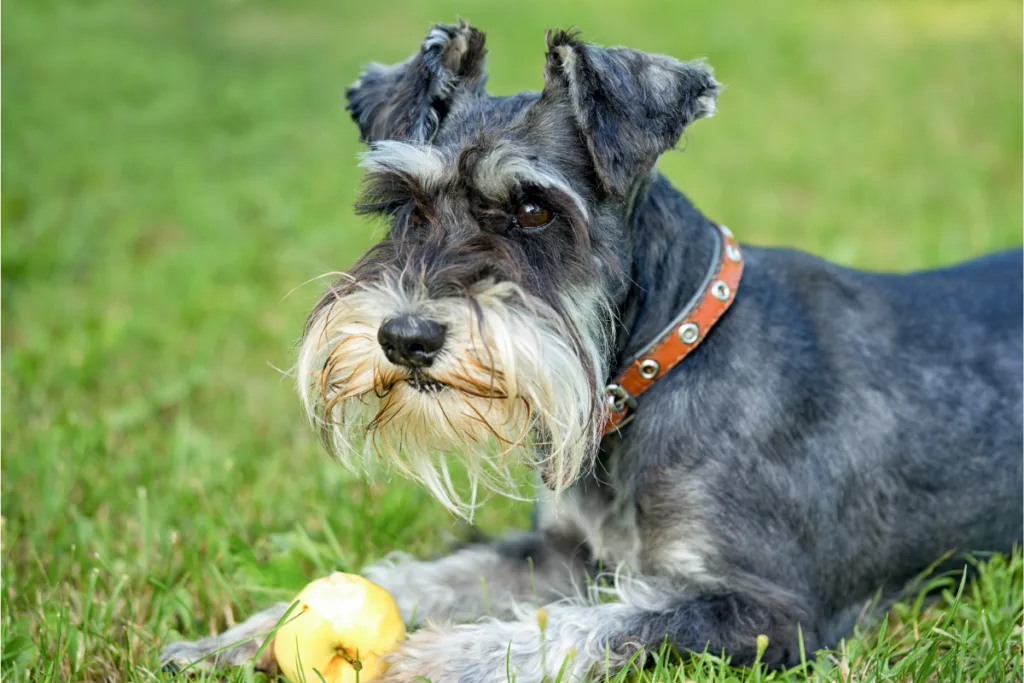
To paraphrase a breed expert, Schnauzers are not the dogs for people who want lazy couch potatoes or dogs who can be fed and forgotten. Their family is everything to a Schnauzer (regardless of whether they’re a miniature, standard, or giant).
A Schnauzer is a strong-willed, energetic dog who loves participating in whatever its owner is doing. Unfortunately, a Schnauzer’s strong-willed determination to get the job makes them hair-raising terrors when left alone to deal with their separation anxiety.
Schnauzers suffering from separation anxiety wreak havoc on the home and frequently injure themselves in their desperate attempts to escape.
This breed is frequently ranked as one of the top 10 breeds most likely to suffer from separation anxiety. The incidence of separation anxiety in Schnauzers is sufficiently widespread that veterinarians feel it is prudent to warn potential owners about the possibility of separation anxiety.
5. Daschund

The UK Daschund Breed Society notes that maturing Dachshunds (i.e., puppies and juveniles) are prone to barking, resistant to housetraining, and may be destructive if left alone.
A juvenile Daschund’s resistance to being left alone can transform into clinical separation anxiety in adult dogs unless the breeders and new owners do extensive socialization and training.
A 2016 study investigated whether separation anxiety was due to genetic traits that could be passed down through family lines.
The researchers found that two genes, IGF1, and HMGA2, predispose dachshunds to develop:
- Separation anxiety
- Touch sensitivity
- Owner-directed aggression
- Inter-dog rivalry
These loci variants are responsible for the Dachshund’s small size and short legs.
The genetic link between small size and separation anxiety explains why miniature Dachshunds have a higher risk of developing separation anxiety than standard Dachshunds.
A 2019 Japanese study found that Miniature Dachshunds were twice as likely to suffer from separation anxiety and excessive barking as the general dog population.
Dachshunds suffering from separation anxiety are unpopular neighbors as they tend to howl the place down.
6. Jack Russell Terrier
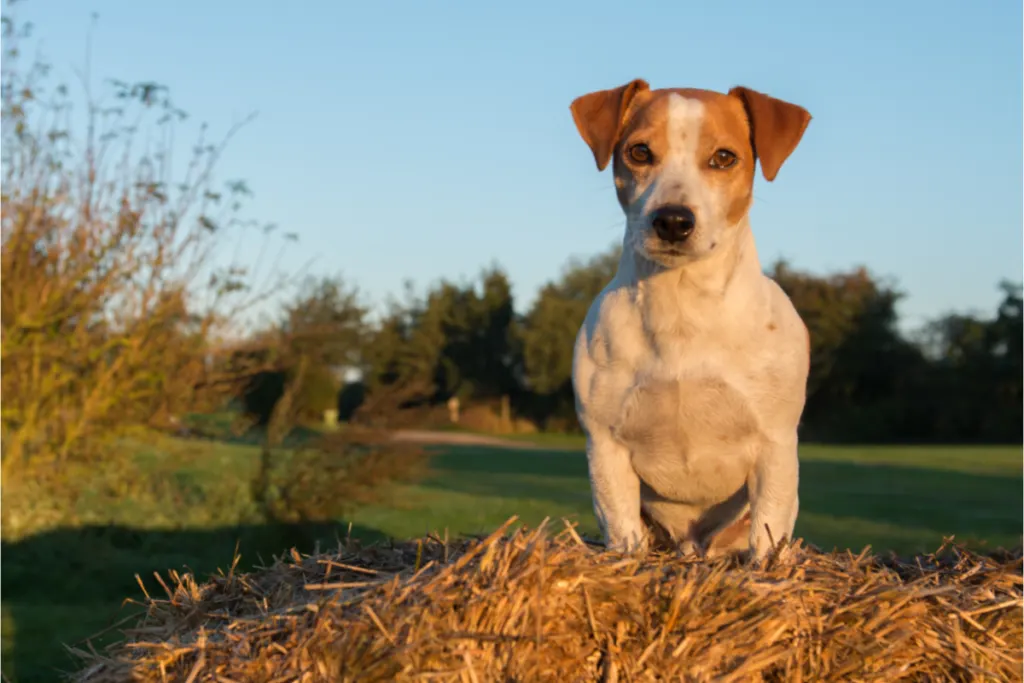
Most dog breeds were developed to fulfill a specific purpose; however, many modern dogs have lost the intensity and drive needed to perform their breed-specific function.
Dog breeders are less concerned with producing outstanding hunters, trackers, and watchdogs and have shifted their focus to breeding pets.
A pet dog generally has a lower energy level, reduced prey drive, and a more laid back approach to life than their working counterparts.
Although this trend is seen in many dog breeds, it has not yet influenced Jack Russel Terriers. These little dogs are busy, busy, busy; even pet Jack Russell Terriers are more than ready to perform their job with energy and enthusiasm.
The breed’s loyalty, high energy levels, and devotion to their owners mean they are more likely to develop separation anxiety than easy-going, low-energy dog breeds.
Although Jack Russell Terriers are prone to separation anxiety, their destructive habits in their owner’s absence could be due to boredom and not anxiety-based behaviors.
7. German Shepherd
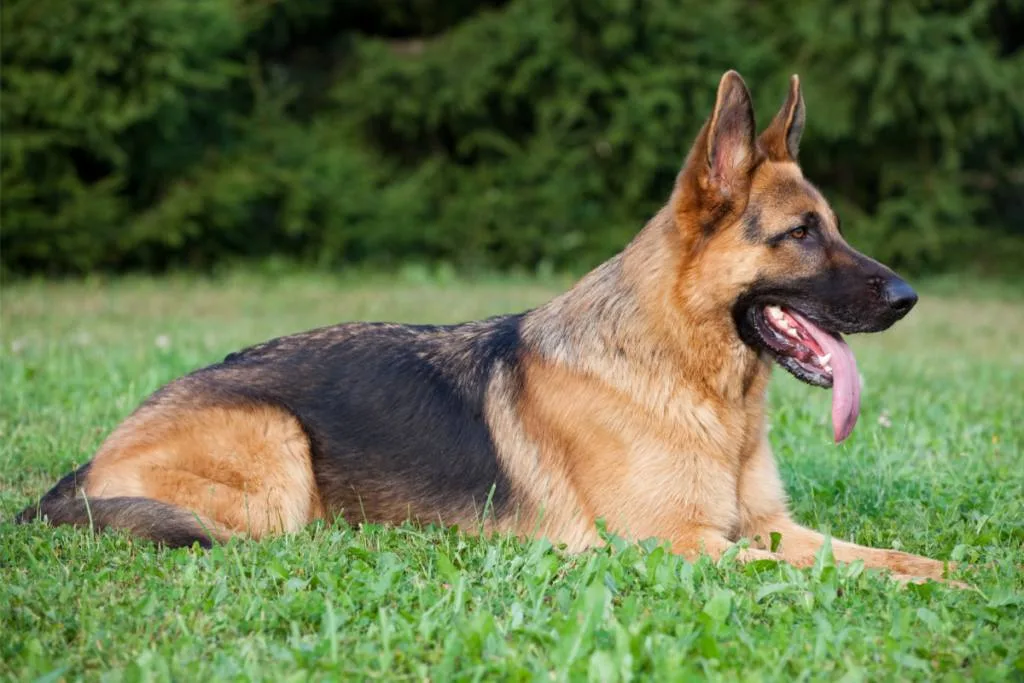
Unlike some other dog breeds found on this list, it is not surprising to find German Shepherds featured here.
To many people, German Shepherds are synonymous with “police dogs”; their intelligence, sensitivity, and courageousness have made them ideally suited to protection work.
However, while experienced dog handlers prize these traits, they can be difficult for novice dog owners to manage. German Shepherds are an intense breed that quickly becomes unbalanced, anxious, and aggressive unless their physical and mental needs are met.
A longitudinal study analyzed dogs referred to a USA veterinary behavioral clinic between 1997 and 2017. The researchers found that 72% of dogs were referred for aggression issues while 20% were referred for anxiety-related problems.
German Shepherds were more likely to be referred to the clinic for behavioral reasons than other breeds, e.g., Golden Retrievers and Labrador Retrievers.
The German Shepherds in the study showed a “normal distribution” of behavioral problems:
- 70% of German Shepherds being referred for aggression issues
- 20% were referred for anxiety-related behaviors such as separation anxiety
However, the researchers caution that the German Shepherd’s size may skew these results.
Owners are more likely to seek professional help for large, aggressive dogs than smaller dog breeds, i.e., small dogs are less likely to cause significant damage than a large breed dog showing the same behavior.
Two studies published in February 2019 and October 2019 found that separation anxiety in German Shepherds has genetic and non-genetic components.
Heritability of traits linked to separation anxiety can predispose a German Shepherd to separation anxiety. However, these inherited traits do not guarantee that an individual German Shepherd will develop separation anxiety.
Separation anxiety in genetically predisposed individuals is often triggered by environmental factors, which can be avoided if the dog is placed in a suitable home environment with an experienced handler.
The article below goes into depth about German Shepherd separation anxiety:
How to Deal with German Shepherd Separation Anxiety
8. Tibetan Spaniel
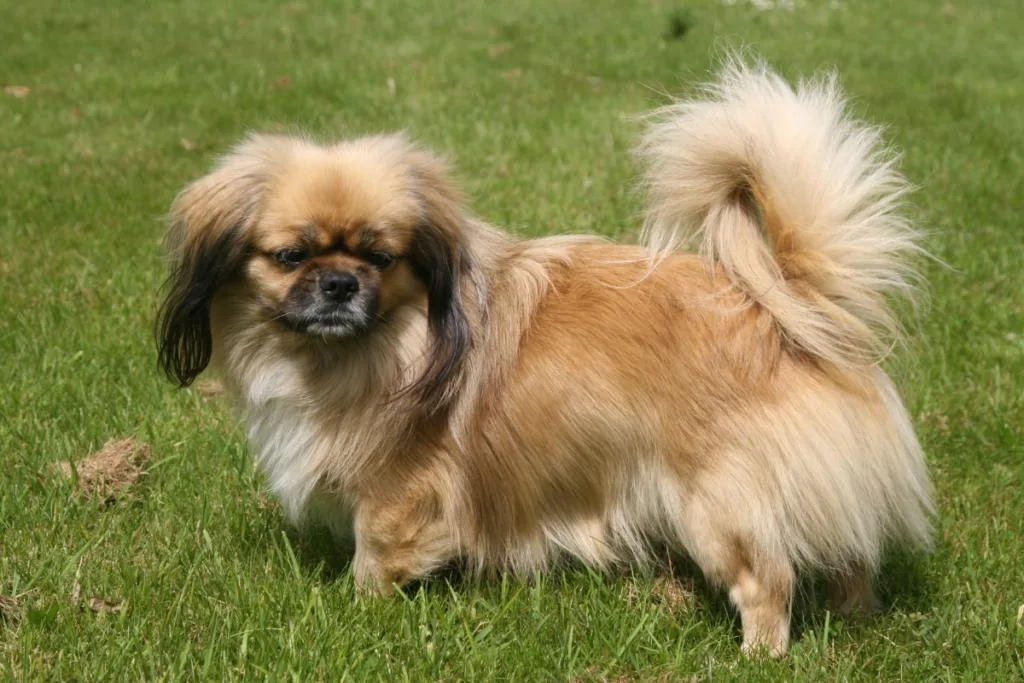
Tibetan Spaniels are a relatively uncommon breed in the USA and UK. Originally bred to be the sentinel of Tibetan Monasteries, these dogs were expected to alert the monks to any threats or unusual activities.
The sentinel duties of the Tibetan Spaniel led to the development of an alert, active dog known for its fearlessness and devotion to its humans.
The AKC describes the bond between Tibetan Spaniel and humans as a “close, worshipful” bond.
While this extreme loyalty and closeness between dog and owner may be attractive to some people, many people are unable or unwilling to assume the responsibility associated with this intense attachment.
Hyper attachment between dog and owner has been identified as one of the significant risk factors for separation anxiety in dogs.
Despite their relative rarity, Tibetan Spaniels are the 8th most common dog to present with separation anxiety in Norway, indicating that the prevalence of separation anxiety within the breed is higher than population averages.
9. Toy And Miniature Poodles

Originally bred in Germany, poodles were created to be specialized duck-hunting dogs.
The dogs’ “frou-frou” haircuts were not a fashion statement but rather a practical hairstyle meant to streamline the dog and prevent it from becoming waterlogged in icy rivers and dams.
Unfortunately, many people forget that poodles are the consummate working dog and mistakenly assume that these dogs are little better than ornamental dogs.
Poodles are considered one of the Einsteins of the dog world and need plenty of mental enrichment to remain balanced happy dogs.
A 2019 study investigated separation-related disorders in poodles.
Two hundred twenty-seven dogs were included in the survey, with 101 (44.49%) owners reporting that their toy and miniature Poodles showed signs of clinical separation anxiety.
Poodles with separation anxiety exhibit excessive vocalization (76.24%) and destruction of property (28.71%). Female poodles were more likely to bark when left alone than males.
Although the incidence of separation anxiety in poodles far exceeds the national averages, researchers caution that it is premature to assume this high incidence is due to heritable traits.
Early socialization, owner attachment, and mental enrichment may have a more significant impact on separation anxiety in poodles than genetic factors.
10. Irish Soft-Coated Wheaten Terrier
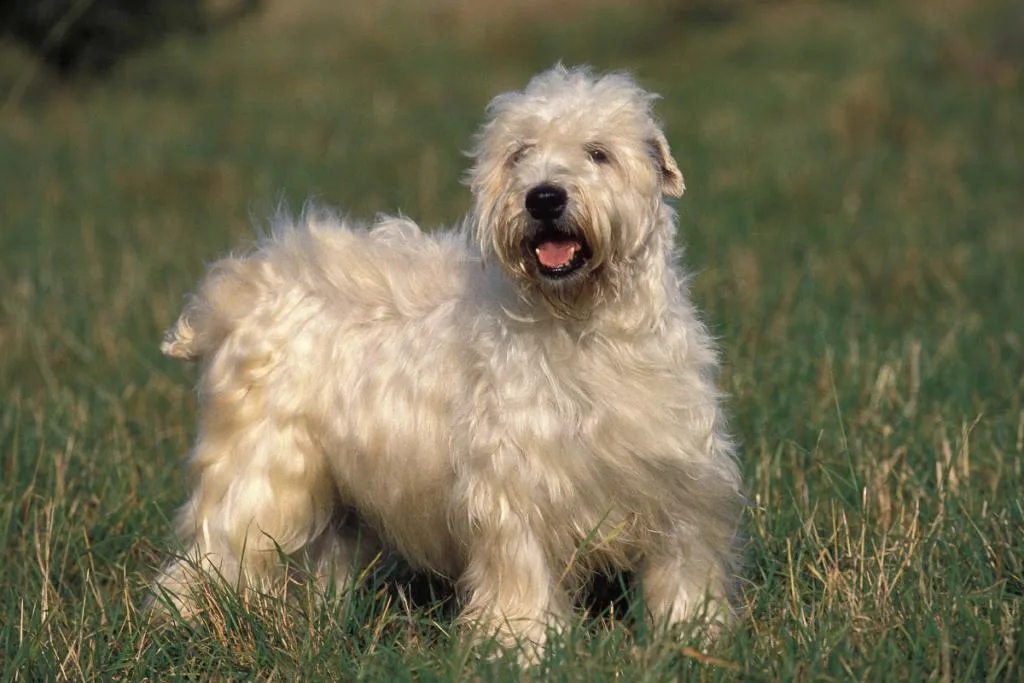
The AKC describes the ideal Soft-Coated Wheaten Terrier as a dog possessing a happy, steady temperament that presents itself with an alert air of confidence.
The breed description hardly fits with a dog featured on a list of dogs prone to separation anxiety!
Sadly, selective breeding focusing on appearance rather than functionality has allowed undesirable temperament traits to be bred into Soft Coated Wheaten Terriers.
Separation anxiety is significantly correlated with general anxiety and noise phobias. 58.8% of Soft-Coated Wheaten Terriers with separation anxiety have elevated general anxiety levels, while 49.5% are afraid of loud noises.
A study published in 2018 investigated the link between the DRD2 gene and noise reactivity in five breeds:
- Havanese
- Soft-Coated Wheaten Terrier
- Collie
- Nova Scotia Duck Tolling Retriever
- Standard Poodle
In Soft-coated Wheaten Terriers, it was found that there were significant associations between the presence of the DRD2 gene and noise phobia.
The high incidence of noise reactivity in Irish Soft-Coated Wheaten Terriers predisposes the breed to the development of separation anxiety.
Risk Factors Predicting Separation Anxiety In Dogs

Separation anxiety in a dog is formally defined as heightened stress in the actual or perceived absence of the dog’s owners.
Studies indicate that 20% of dogs suffer from separation anxiety. However, the true incidence may be far higher. Most dogs struggling with separation anxiety are indirectly diagnosed based on overt behaviors, e.g., excessive barking, inappropriate elimination, or noise complaints.
Owners often fail to recognize separation anxiety in dogs who withdraw or hide when suffering from excessive stress.
It is essential to note that any dog can develop separation anxiety regardless of breed. Risk factors for the development of separation anxiety include:
- Generalized anxiety and noise phobia
- Genetics: Researchers have found that specific genes may predispose some dogs breeds to anxiety-related disorders.
- Gender: some studies have found that male dogs are more likely to develop separation anxiety than females.
- Early life experiences: dogs exposed to a wide variety of novel stimuli in early life are less likely to develop separation anxiety than understimulated dogs.
- Owner attachment style: overdependence and hyper attachment to owners is associated with a higher incidence of separation anxiety.
- Inadequate physical and mental enrichment: over-excited, bored dogs are less able to tolerate being left alone than dogs who are given adequate opportunity to engage in appropriate physical and mental activities.
For thousands of years, dogs have been selected for their ability to bond with humans; the bond between dog and human is analogous to the bond between parent and child.
The owner represents a secure base of attachment from which the dog can explore their world and navigate potentially frightening situations.
Young dogs will often display healthy separation-related behaviors, i.e., they will stay relatively close to their owners when investigating a new area and gradually venture further away as they gain confidence.
How Does Separation Anxiety Manifest In Dogs
Adult dogs diagnosed with clinical separation anxiety cannot function in the absence of their owner and will often present as:
- Excessive vocalization, i.e., barking
- Inappropriate defecation and urination in the house
- Destruction of property
- Self-injury
- Escape attempts
- Trembling
- Excessive salivation
- Repetitive behaviors, e.g., pacing
How To Help Dogs With Separation Anxiety?
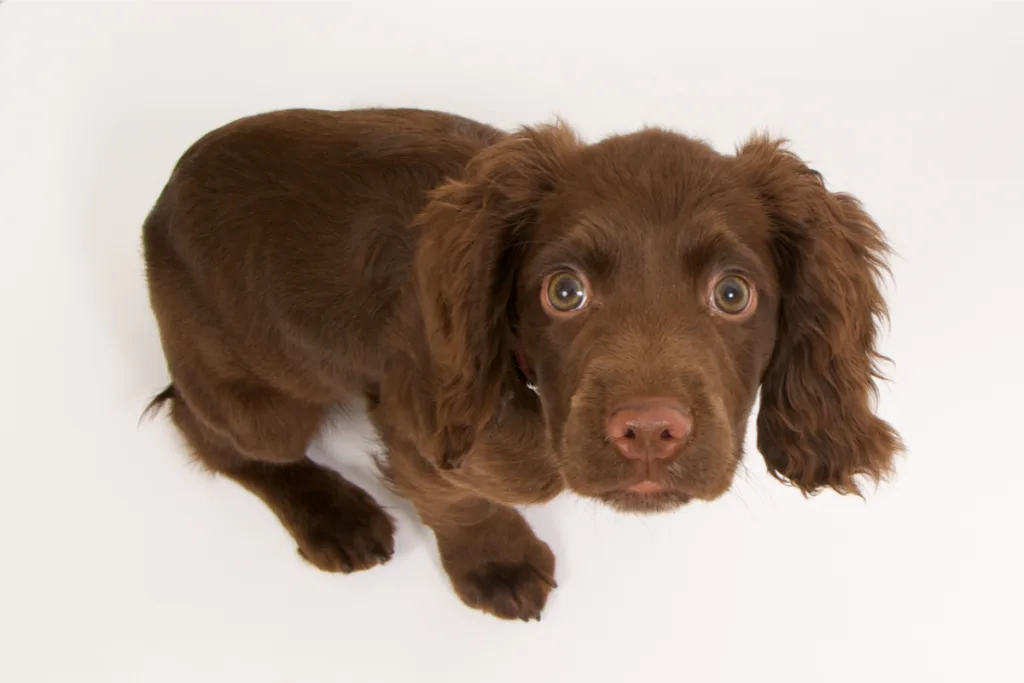
Many owners feel overwhelmed and lost when faced with a dog presenting with severe separation anxiety.
Historical methods of managing separation anxiety included crate training and punishing the dog when noticeable property damage occurred.
Neither of the methods is effective and, in many cases, exacerbates the issue.
Although crate training prevents many of the behaviors associated with separation anxiety, it fails to address the dog’s stress on a neurochemical level, i.e., the dog is still anxious, but the owners no longer recognize the dog’s anxiety as the dog is confined to a cage.
Punishment is only effective if it is delivered within a few minutes of the behavior occurring.
When left alone, dogs who engaged in destructive activities failed to recognize the connection between their owner’s punishment and their behavior.
The most effective methods used to address separation anxiety in dogs are behavioral strategies, which may be supported by medication and dog-appeasing hormones in the early stages of treatments.
Behavioral Interventions For Dogs With Separation Anxiety
Behavioral strategies used to help dogs with separation anxiety include:
- Systematic desensitization, e.g., conditioned approach training
- Counterconditioning
In systematic desensitization, the dog is taught to tolerate being left alone by rewarding calm behavior in the owner’s absence.
The duration of separation is gradually extended until the dog can happily handle routine separation from its owner.
Counterconditioning works on the principle that certain behaviors are incompatible with each other, e.g., eating is associated with a dopamine rush that precludes feelings of anxiety.
Classical conditioning teaches dogs to associate anxiety-provoking situations (e.g., separation from their owner) with positive outcomes (e.g., receiving food).
The manifestation of separation-related behaviors is not identical between dogs, i.e., some dogs bark when left alone while others engage in destructive behaviors.
The most effective behavioral interventions are tailored for the specific dog rather than a generic formula applied to all dogs suffering from separation anxiety.
Victoria Stillwell has a brilliant YouTube video demonstrating how a few different behavioral modification techniques can make a massive difference to dogs with separation anxiety.
Can You Prevent A Dog From Developing Separation Anxiety?
Behavioral modification is the most effective method of helping a dog with separation anxiety.
However, this process is often lengthy and requires the owner to make a significant time commitment to helping their dog.
With separation anxiety, prevention is better than cure! Although separation anxiety is not always preventable, there are a few strategies that have been found to be protective factors against the development of separation anxiety:
- Delay maternal separation: puppies separated from their mother and littermates after 3 months of age have a lower risk of developing separation anxiety later on in life.
- Positive crate training before the onset of separation anxiety.
- Early socialization and exposure to novel stimuli in a safe, confident-building environment.
- Obedience training.
- Adequate age-appropriate exercise and physical activity.
- Access to mental enrichment games (e.g., food toys) in the owner’s absence.
- Early separation training and tolerance; the puppy and juvenile dog mustn’t be exposed to frightening situations during their owner’s absence.
- Rewarding calm behavior.
- Buying confident puppies from breeders who have had their breeding dog’s temperament tested and assessed for anxiety.
- Sending your puppy or dog to “doggy daycare” if your extended absence is unavoidable; your dog will learn that your absence means he gets to play with his friends and enjoy a fun day.
What Ten Dog Breeds Are Low Risk For Separation Anxiety?
Separation anxiety is a financially and emotionally challenging behavior to manage; for some people, the best option is to look for a dog with a low risk for separation anxiety.
Low-risk breeds tend to be:
- Independent dogs with a loose attachment style, i.e., the opposite of Velcro dogs.
- Innate confidence and laid-back temperament.
- Low to moderate energy levels.
Dog breeds that possess these characteristics and thus are less likely to develop separation anxiety include:
- Great Pyrenees
- Great Dane
- Cavalier King Charles Spaniel
- English Bulldog
- Saint Bernard
- Basset Hound
- Chow Chows
- Bernese Mountain Dog
- Pug
- French Bulldog
Final Thoughts
It is essential to note that any dog can develop separation anxiety.
However, the ten breeds listed in this article have a higher incidence of risk factors predisposing them to the development of separation anxiety.
Although recent research has indicated a possible link between genetic traits and separation anxiety, a high-risk dog is not guaranteed to develop separation anxiety.
Conscientious owners who socialize their dogs from a young age and offer appropriate mental and physical enrichment may be able to prevent their genetically predisposed dogs from developing clinical separation anxiety.
